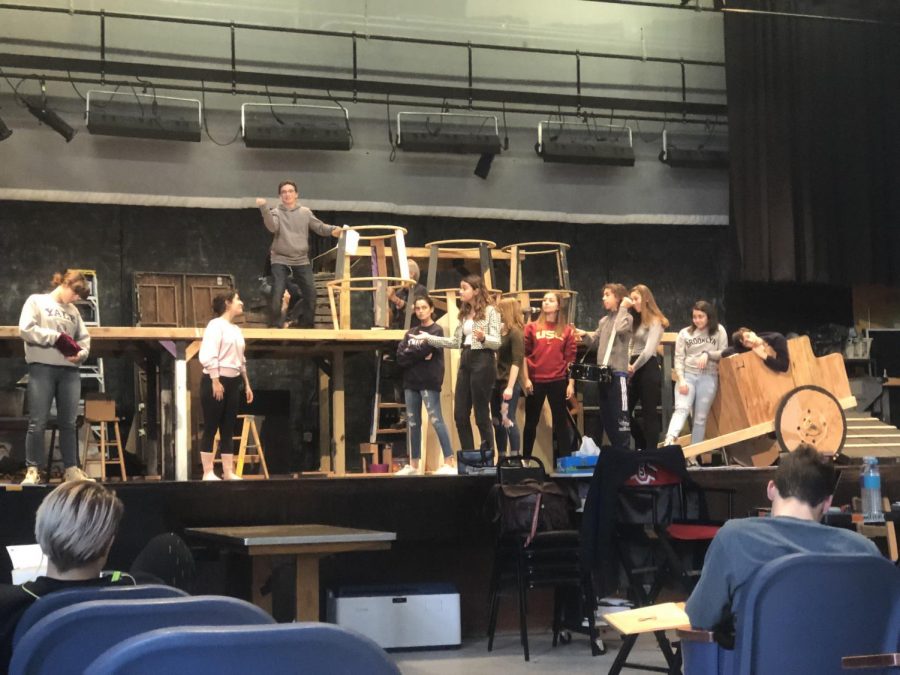WHS presents Rosencrantz and Guildenstern
Behind the scenes of Hamlet like you have never seen it before
Photo Mr. Devlin
The cast at rehearsal
WHS theatre department’s fall play, Rosencrantz and Guildenstern Are Dead, will run for three nights: Nov. 15th, 16th and 17th. But, the work put into the production takes far more than just those three nights. Audience members only see the actors in character on a stage filled with elaborate sets and intricate lighting; what they don’t see is the months of hard work and preparation put into making the play exceptional. So the question is: what actually goes into putting on this production?
Director and WHS Drama Teacher Daniel Devlin chose the play Rosencrantz and Guildenstern Are Dead for this year’s fall production. Essentially, the play is a 20th century comedic take on the traditional story of Hamlet, a Shakespearean play, told through the eyes of two minor characters, Rosencrantz (played by senior Abbie Painter) and Guildenstern (played by senior Julia Salvato). The story consists of only the scenes in Hamlet where these two minor characters are present. Rosencrantz and Guildenstern Are Dead is well-known for its existential exploration of tragedy and comedy.
“It’s also about a lot of huge themes, like what it means to be alive and what it means to look at things from the opposite perspective,” Devlin said when describing the essence of the show.
The cast agrees about the depth of this play. “I’ve never done a show that makes you think like this one does,” said Painter. “It’s so entertaining but at the same time thought-provoking.”
The first step after choosing the play is the audition process. “It’s very challenging because [students] have to come in with prepared material that they believe is best representative of who they are, as well as the [role] that they want to be cast in,” Devlin said. “This year that meant you had to do Shakespeare.”
“[Auditioning] is nerve wracking because when you perform, it’s in front of everyone else who is auditioning,” said senior Lily Paone. “But everyone is really supportive of each other and we always cheer everyone on, even when we don’t know the person.”
Once the play is cast, the second step is a read-through. All cast members attend the rehearsals to start learning the story of their character. One of the most difficult aspects of this show is that there are ten characters, the Tragedians, who do not have any lines at all. “They have to figure out how to create their own characters all on their own,” said Devlin.
Following the read-through, the actors have five to seven rehearsal days dedicated to table work. These are specialized rehearsals for smaller groups to practice their lines.
When the actors are deemed ready to begin practicing off script, rehearsals become dedicated to staging. During staging, the actors plan where they will be standing and moving throughout the performance.
“A normal rehearsal day is chaos. There are so many different things happening at once,” said Devlin. Cast members are rehearsing lines on stage while the set is being built behind them. At the same time, the department heads are meeting and planning their responsibilities— like sound, makeup, lighting and costuming.
A typical rehearsal day for the cast lasts three hours after school, unless it’s “Tech Saturday” or a dress rehearsal. Those rehearsals last for many hours in order to finalize all the preparations for the production.
The fall production of Rosencrantz and Guildenstern Are Dead is one that you will not want to miss—all your existential questions will be explored. Tickets can be bought at whstd.booktix.com beginning Nov. 7th.

